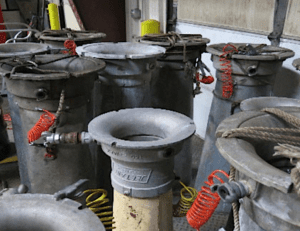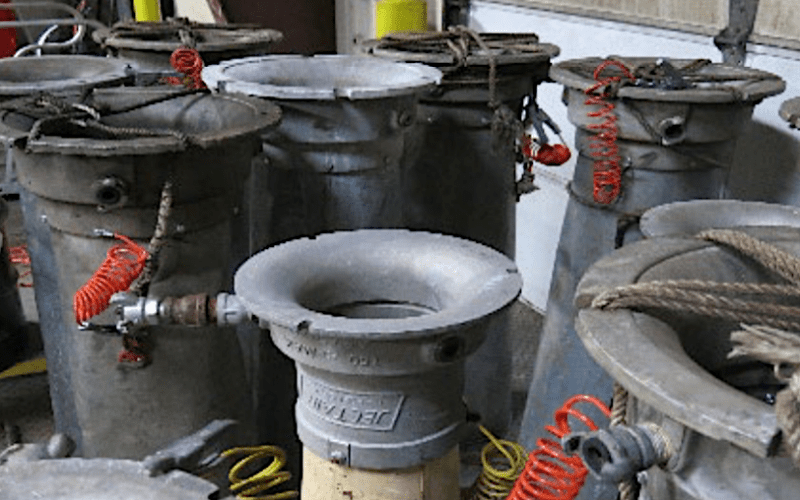(WASHINGTON) — A recent U.S. Coast Guard investigation involving a fire and subsequent loss of propulsion on board an inspected vessel serves as a reminder of safety issues caused by condensate forming in air lines.
During the investigation, an underlying issue was discovered that caused condensate to form in air lines that supplied compressed air to the vessel’s air-operated engine throttle and clutch control systems. When the vessel is operating in cold weather, the condensate can freeze, potentially blocking the flow of compressed air or cause the pneumatic engine throttle and clutch
controls to stick or freeze.

There are many systems vital to vessel and personnel safety which depend upon the reliable, uninterrupted flow of contaminant-free compressed air. Propulsion control equipment (pneumatic engine starters, throttle controls, governors, air-operated clutch systems, etc.), and pneumatically operated air-blowers used in gas-freeing operations are just a few examples of such equipment.
Importance of pressure dew point vs. ambient operating temperature
Condensate forming within the air lines of a compressed air system indicates that the compressed air has not been adequately dried for the ambient operating temperature to which the air lines are exposed. When compressed air is not adequately dried for its operating environment, the temperature of the compressed air can drop below its pressure dew point and water vapor in the air may condense. This results in contaminating the air lines with moisture, which can cause an unexpected failure of air-operated equipment due to the restriction or blockage in the flow of compressed air, excessive corrosion, and failure of internal components.
When used with pneumatic blowers/tools, this condition may create other environmental hazards such as increased generation of static electricity. To ensure the safe and reliable operation of air-operated equipment, it is critical that the supplied compressed air is free of moisture and other contaminants.
A compressed air system properly designed for the operating environment will have an appropriate air dryer installed to remove moisture and reduce the pressure dew point of the compressed air to a threshold well below the temperature of the ambient operating temperature. This will ensure the temperature of the compressed air will never reach its pressure dew point, thus preventing water vapor in the air lines from condensing and the air lines becoming contaminated with moisture.
The Coast Guard strongly recommends that vessel owners and operators, inspectors, and third-party surveyors:
• Identify compressed air systems vital to the safety of the vessel and/or personnel. Such systems include but are not limited to:
– Engine starting, throttle control and clutch control,
– Pneumatic blowers or tools used by personnel working in or near flammable
atmospheres,
– Compressed air systems supplying the ship’s horn,
– Other equipment for which the unexpected interruption of compressed air could jeopardize the safety of the vessel and/or persons on board.
• For vessels which may operate in cold temperatures: Verify that control and ship’s service compressed air systems are properly equipped with air drying arrangements that will lower the pressure dew point (of the compressed air) below the operating temperature to which the air lines are exposed. This ensures that the temperature of the operating environment will not cause the temperature of the compressed air to reach its dew point and will prevent condensate and ice from forming within the air lines. For example, some desiccant and membrane dryers can reduce the pressure dew point of compressed air to minus 40 degrees Fahrenheit below zero, which would prevent the formation of condensate and ice in air lines exposed to cold temperatures. Moisture removal may also involve equipment such as compressor intercoolers, aftercoolers, air filters, dryer desiccant, sensors, and automatic drain traps, all of which should be properly maintained to ensure a moisture-free air supply.
This safety alert is provided for informational purposes only and does not relieve any domestic or international safety, operational or material requirement. Developed by Marine Safety Unit Chicago and distributed by the Office of Investigations and Analysis. Questions may be sent to HQS-SMB-CG-INV@uscg.mil.

